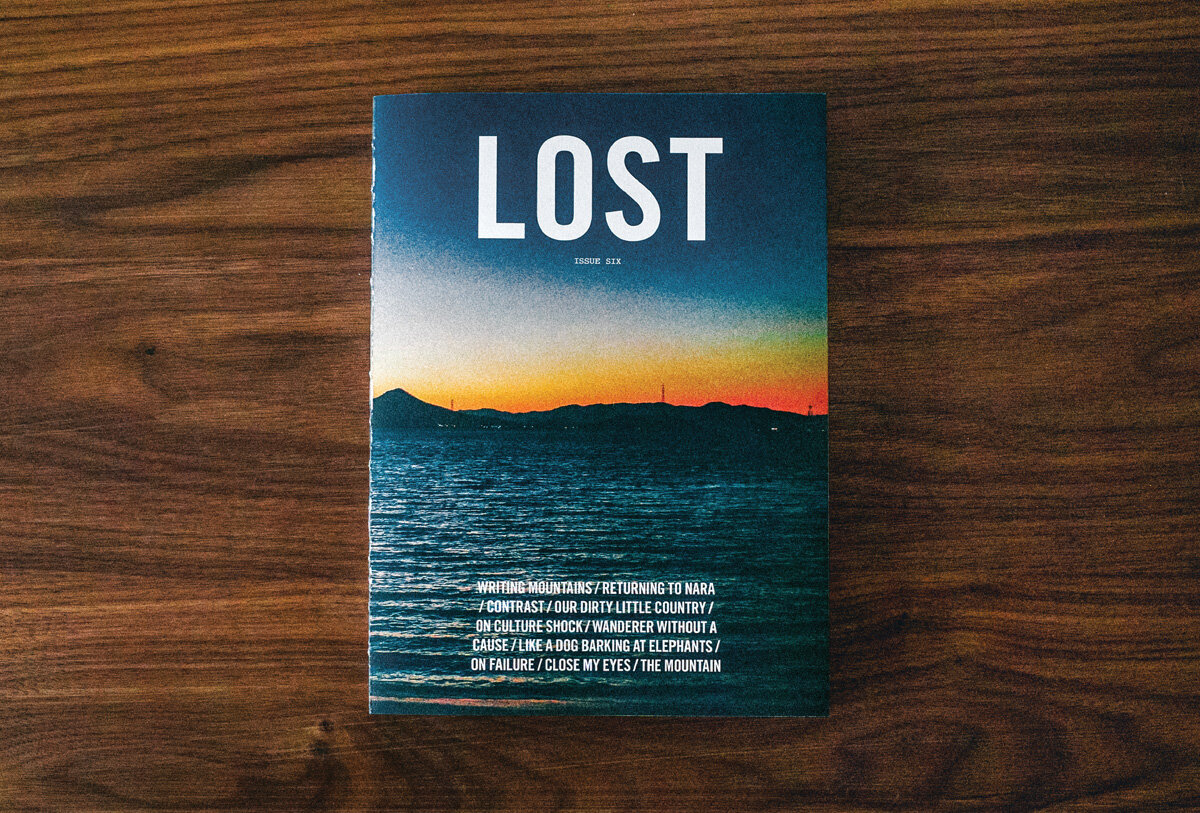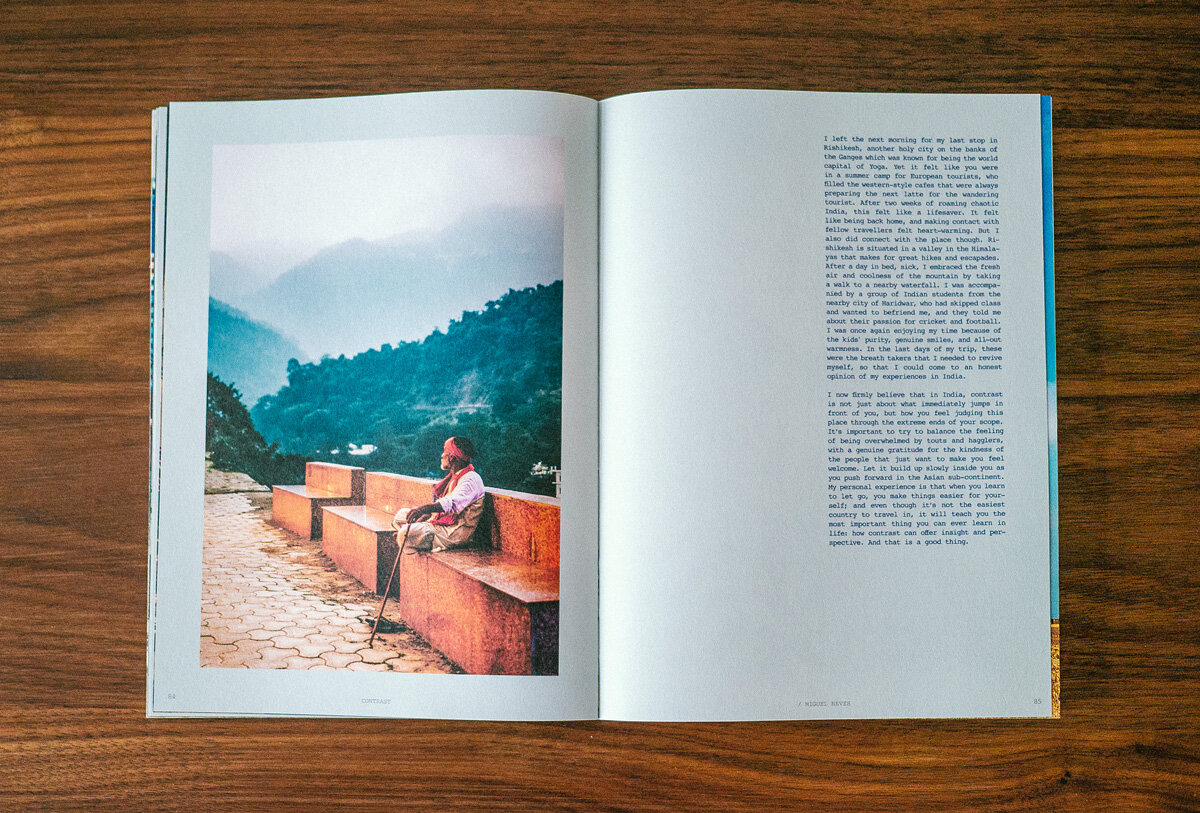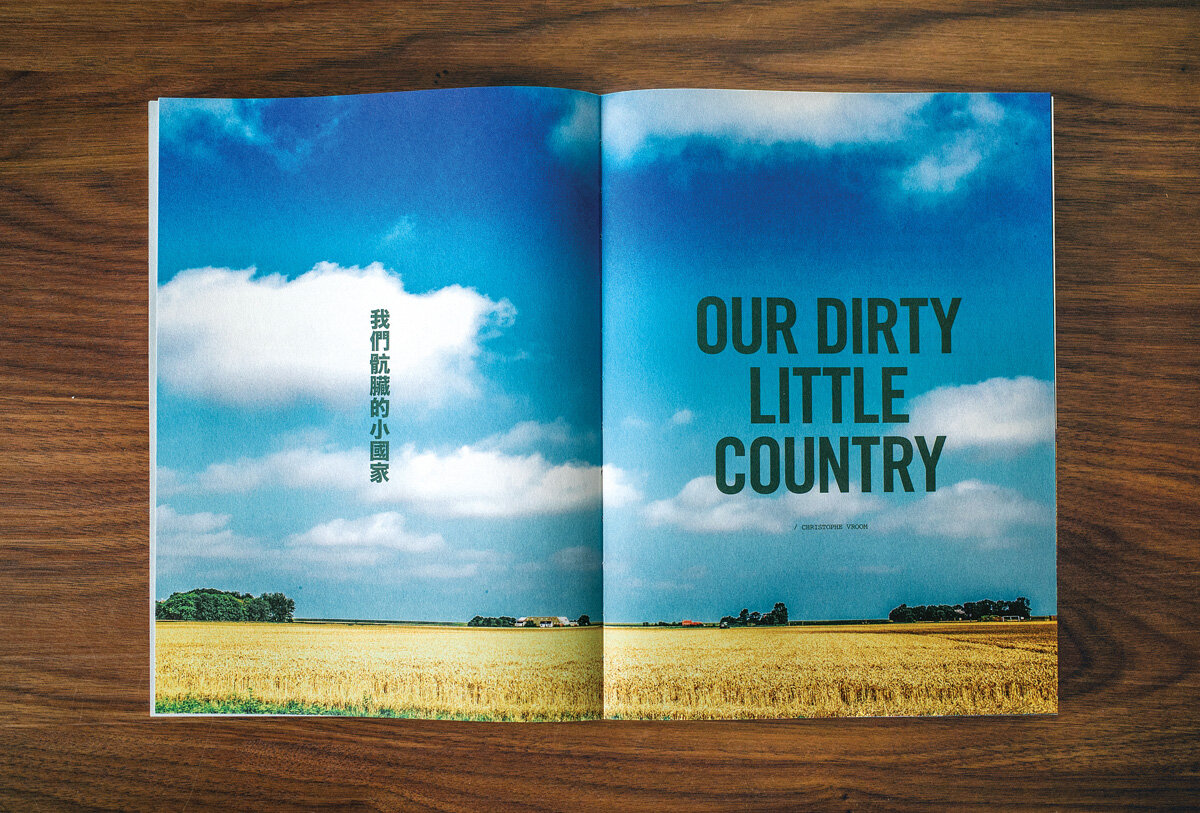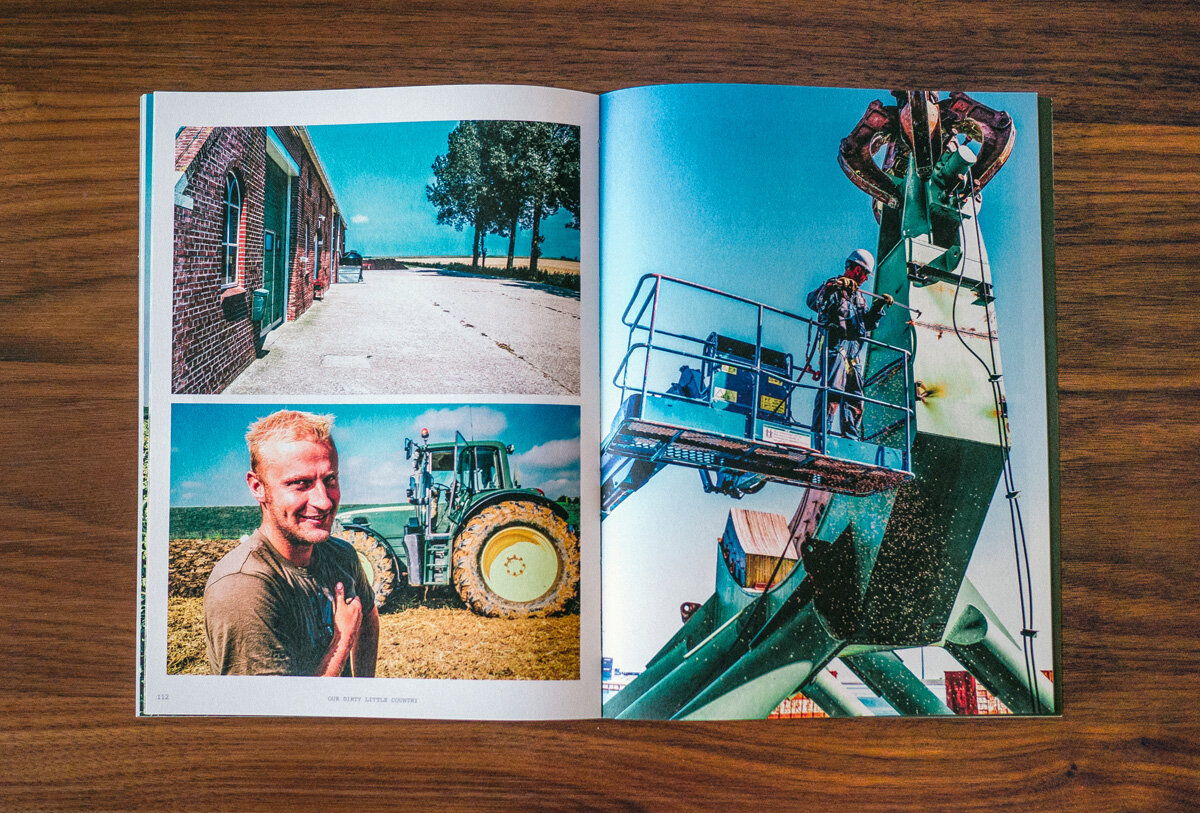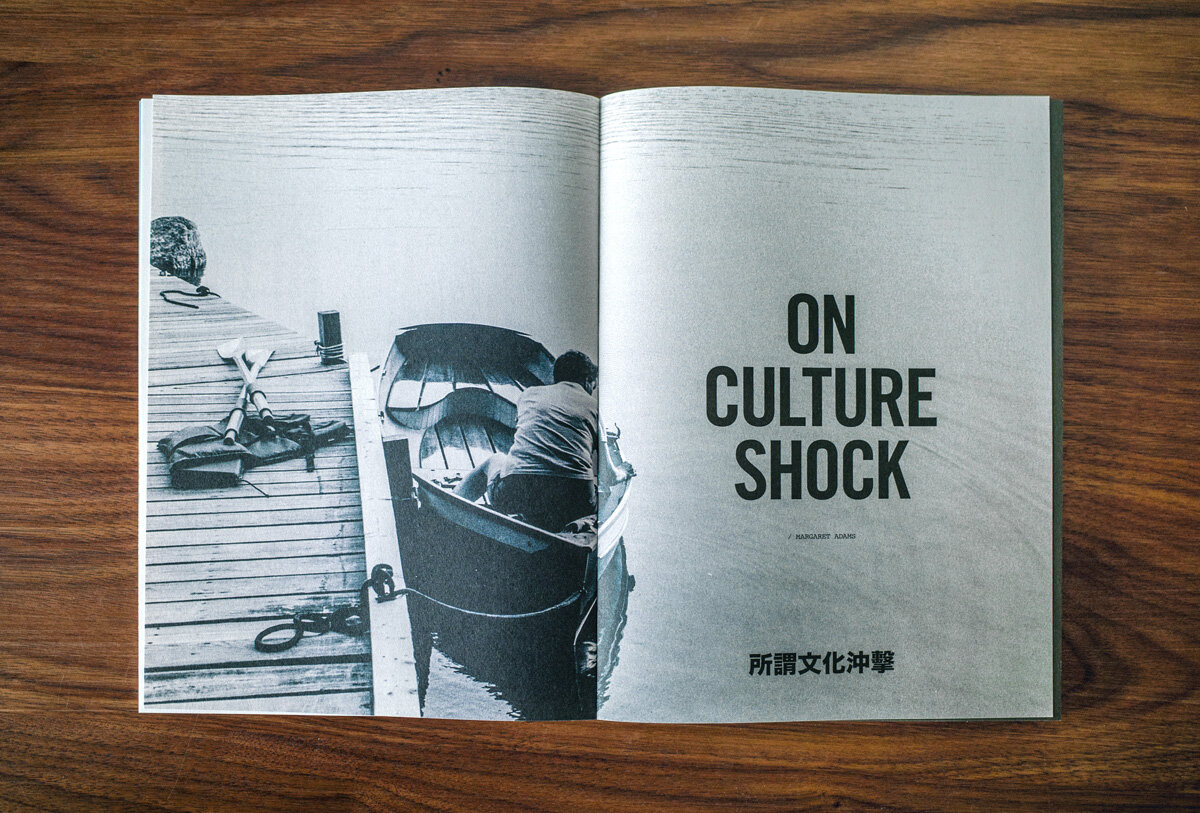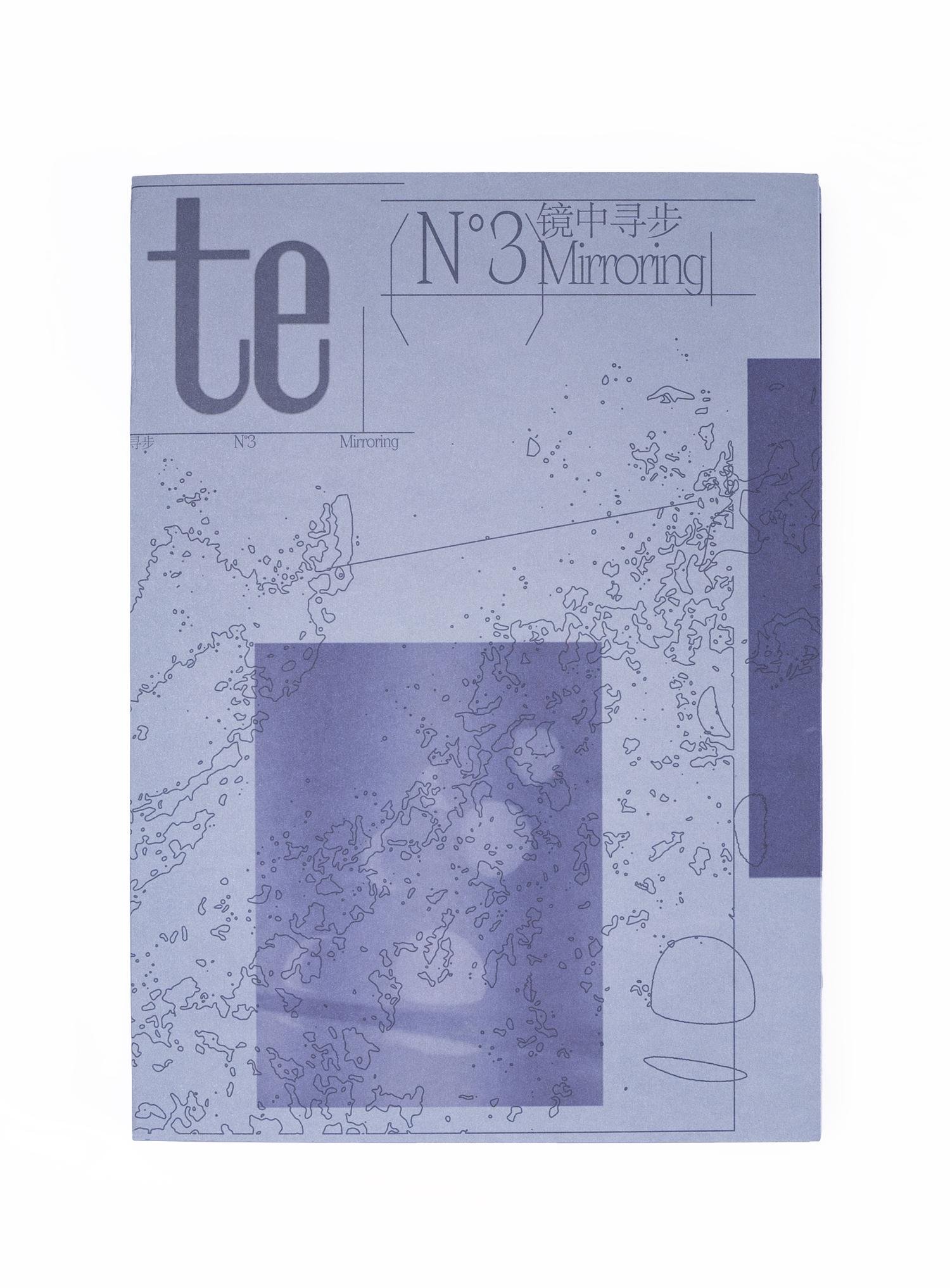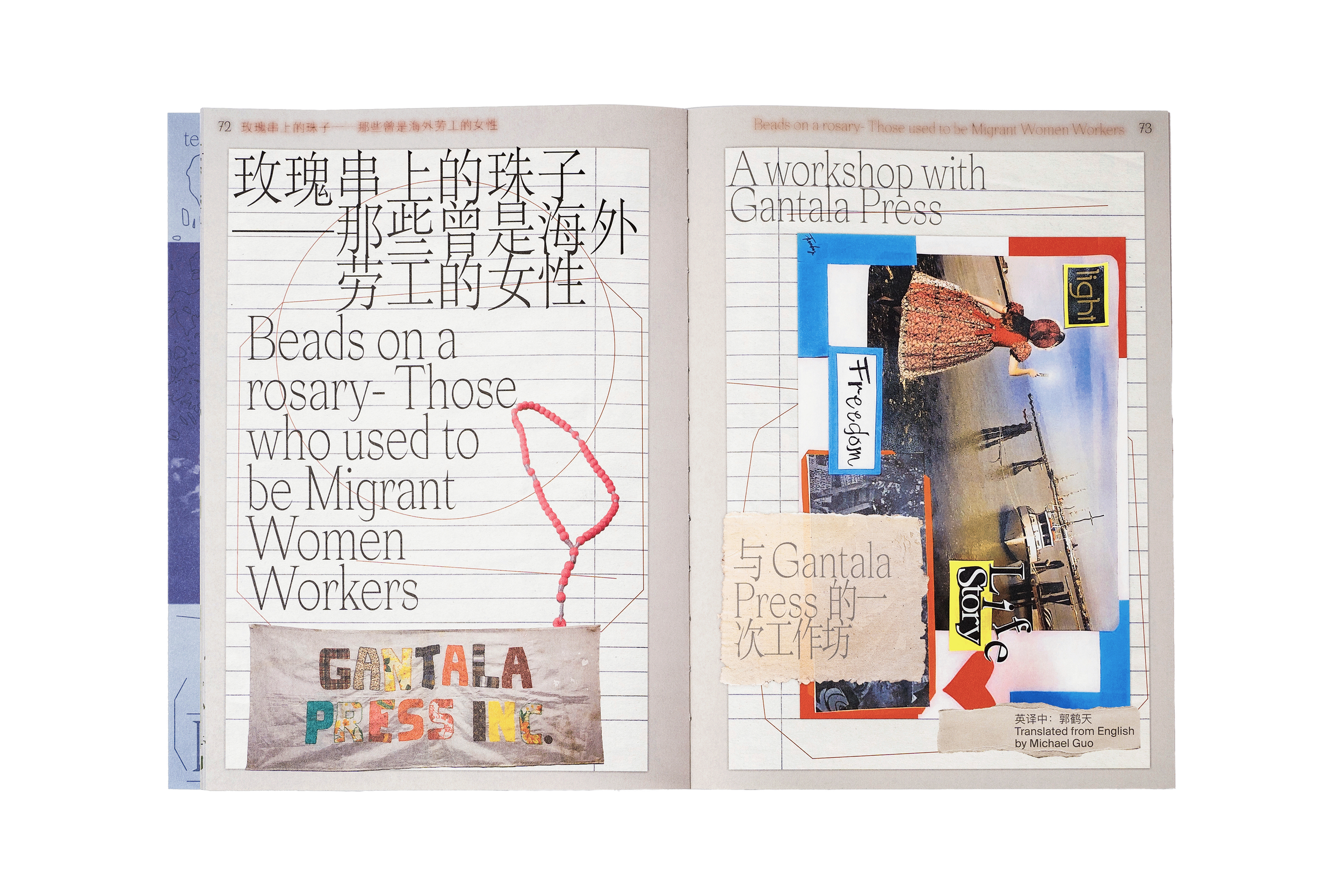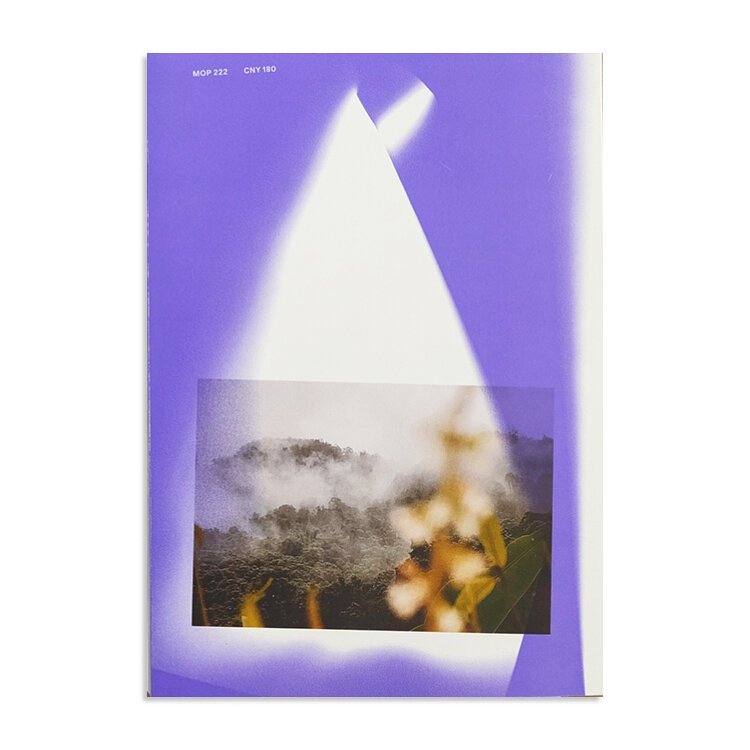 Image 1 of 5
Image 1 of 5

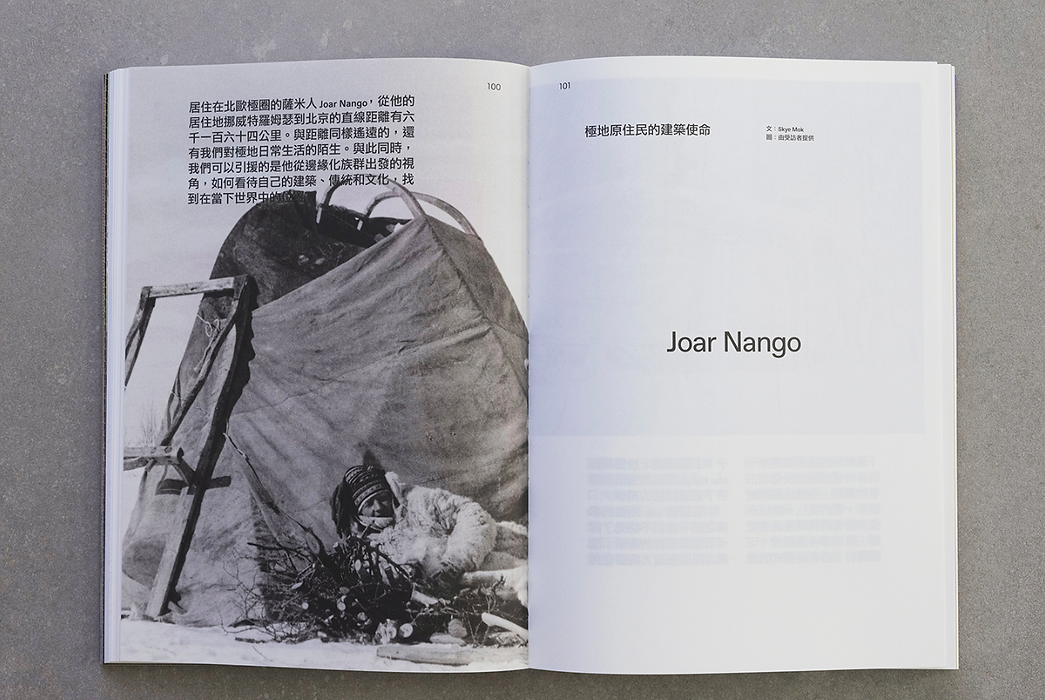 Image 2 of 5
Image 2 of 5

 Image 3 of 5
Image 3 of 5

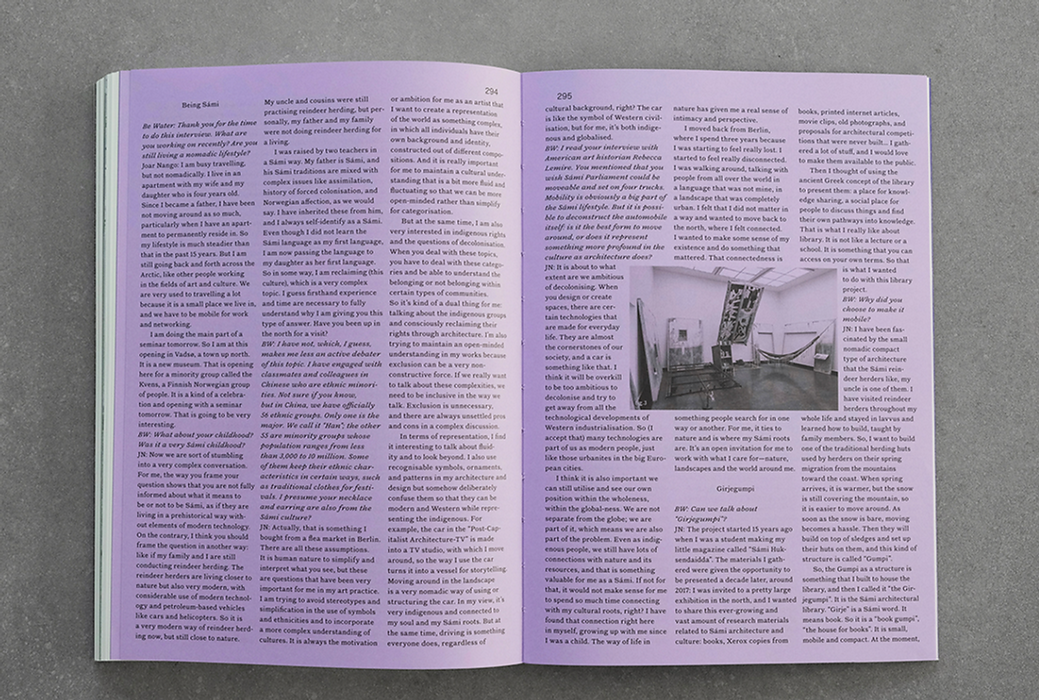 Image 4 of 5
Image 4 of 5

 Image 5 of 5
Image 5 of 5

Be Water Journal Magazine Issue 04 Nature 自然而然 / Joar Nango / Tromsø
Be Water Journal Magazine 水象 Issue 04 Nature 自然而然
Ecological Art and Design, Sami Indigenous Architecture and Culture, Africa Herbal and Postcolonialism, Whale Songs and Ocean Soundscapes of the Anthropocene, Social Botany, Young Farmers and Farms, Field Recording, Ecocide and the Extinction of Animal Minds etc.
Be Water Journal, narrows the focus on "person", capturing the "Cultural Creatives" from around the world, people that immerse themselves in creation and life, heading towards their hopes and ideals along with their insightful reflections on the environment and ecology, social issues, ethnic and regional culture, and more. With an ingeniously designed mix of thoughts, artworks and lifestyles from globally distributed the cultural creatives, Be Water Journal aims at establishing an innovative platform for cross-boundary exchanges and cooperation, helping grasp a world understanding of East and West, as well as traditions and contemporary culture, in a quest for integration and a sustainable future.
Format: 17 x 24 cm
Pages: 312
Language: Chinese + English
Ren Ri, artist In a Symbiotic Relationship with Bees
Ren Ri is a research-based designer and artist focusing on BioArt. Born in Harbin in 1984, he received his bachelor’s degree from the Academy of Arts & Design of Tsinghua University, master’s degree at the Herzen State Pedagogical University of Russia, Saint Petersburg, PhD from the Central Academy of Fine Arts in Beijing, and master’s degree from the MIT Media Lab.
Michele Sibiloni, photographer Grasshopper Hunters at Night in Uganda
Ren Ri, artist In a Symbiotic Relationship with Bees Ren Ri is a research-based designer and artist focusing on BioArt. Born in Harbin in 1984, he received his bachelor’s degree from the Academy of Arts & Design of Tsinghua University, master’s degree at the Herzen State Pedagogical University of Russia, Saint Petersburg, PhD from the Central Academy of Fine Arts in Beijing, and master’s degree from the MIT Media Lab. Michele Sibiloni is an Italian photographer and videographer who has lived between Italy and Uganda for many years. Between 2012 and 2014, he photo- graphed the nightlife of Kampala, and published a photo book “fuck it” in 2016, which was chosen by “Time” magazine and other media as one of the best books of the year. His latest project “Nsenene” recorded grasshopper hunting in Uganda, published by Edition Patrick Frey in 2021. The project was exhibited at Aperture Gallery for the show “Delirious Cities” in 2017 and several other exhibitions.
Joar Nango, artist & architect: The Mission of a Sámi Architect
Joar Nango was born in Alta in 1979 and lives in Tromsø. He works with site-specific installations and self-made publications that explore the boundary between architecture, design and visual art. His work relates to questions of Indigenous identity, often through investigating contemporary architecture. Joar has explored modern Sámi spaces through the self-published zine “Sámi Huksendáidda: the FANzine”, the design project “Sámi Shelters” and the mixtape/clothing project “Land & Language”. He is a founding member of the architecture collective FFB and is currently setting up a network of Sámi architects across Sápmi through the ongoing Indigenous architecture library project.
Brian CHU Yin-woo, farmer & musician Opening up the Land in Hong Kong
Brian Chu Yin Woo’s practice involves the use of percussive instruments, the manipulation of cassette feedback, and the use of various found objects for the experimental purposes of exploring their sonorous properties. His practice is premised upon attentiveness to the echoes that resound from the surfaces of daily living, the sonic relationships between everyday objects, and an inclination towards the rhythms they happen to produce. Percussion is his visceral response to all of these.
No.223, photographer Take a deep dive into the micro world
No. 223 was born in Guangdong, China in 1979. He is a leading figure of new Chinese photography emerging in the last decade. His work has come to reflect and define a certain zeitgeist of the non-mainstream Chinese youth born in the 1980s and 1990. His photographs have been exhibited in solo shows domestically and internationally, including Delaware Contemporary Museum, The Walther Collection, Stieglitz19 Gallery, to mention only a few. He has published photo books in China, France, Canada, Japan and Italy.
Uriel Orlow, artist African Herbs, Agriculture, and Post-colonialism
Uriel Orlow lives and works between London and Lisbon. He studied at Central Saint Martins College of Art & Design London, the Slade School of Art, University College London and the University of Geneva, completing a PhD in Fine Art in 2002. In 2020 he received the C. F. Meyer Prize, and in 2017 he was awarded the Sharjah Biennial prize. He also received an annual art award of the City of Zurich in 2015 and three Swiss Art Awards at Art Basel (2008, 2009, 2012) and was shortlisted for the Jarman award in 2013. Uriel Orlow’s practice is research- based, process-oriented and multi-disciplinary, including film, photography, drawing and sound. His work is concerned with residues of colonialism, spatial manifestations of memory, blind spots of representation and plants as political actors.
Xu Tan, artist Into the field
Xu Tan was born in Wuhan, China in 1957. He studied oil painting at the Guangzhou Academy of Fine Arts. In 1993, he joined the “Da Wei Xiang” (Big Tail Elephant Group), the Guangzhou-based artist collective. His practices incorporate multimedia works, including text, images, video, performance, and so forth. He has participated in numerous Biennales and Triennials worldwide, such as those in Venice (2003, 2009), Berlin (2001), Guangzhou (2005), Gwangju (2002), Shanghai (2014), and Sharjah (2015). He seldom holds solo exhibitions. His most recent solo exhibition was “Questions, Soil and ‘Socio-Botanic’ ” at Vitamin Creative Space, Guangzhou, 2013.
Lisa Walker, musician Ensemble with Humpback Whales
Lisa Walker was born in Vancouver, Canada. She studied classical violin at an early age. After training at the Vancouver Conservatory of Music, she explored various styles, including jazz, folk, and blues. In 1996, she was invited to join a humpback whale research group in southeast Alaska. As a musician, she was able to identify subtle patterns of whale acoustic activities that were less obvious to scientists. Her album “Grooved Whale”, based on her exploration of humpback whale songs, won the NAV Award for Best Environmental Album of the Year.
Be Water Journal Magazine 水象 Issue 04 Nature 自然而然
Ecological Art and Design, Sami Indigenous Architecture and Culture, Africa Herbal and Postcolonialism, Whale Songs and Ocean Soundscapes of the Anthropocene, Social Botany, Young Farmers and Farms, Field Recording, Ecocide and the Extinction of Animal Minds etc.
Be Water Journal, narrows the focus on "person", capturing the "Cultural Creatives" from around the world, people that immerse themselves in creation and life, heading towards their hopes and ideals along with their insightful reflections on the environment and ecology, social issues, ethnic and regional culture, and more. With an ingeniously designed mix of thoughts, artworks and lifestyles from globally distributed the cultural creatives, Be Water Journal aims at establishing an innovative platform for cross-boundary exchanges and cooperation, helping grasp a world understanding of East and West, as well as traditions and contemporary culture, in a quest for integration and a sustainable future.
Format: 17 x 24 cm
Pages: 312
Language: Chinese + English
Ren Ri, artist In a Symbiotic Relationship with Bees
Ren Ri is a research-based designer and artist focusing on BioArt. Born in Harbin in 1984, he received his bachelor’s degree from the Academy of Arts & Design of Tsinghua University, master’s degree at the Herzen State Pedagogical University of Russia, Saint Petersburg, PhD from the Central Academy of Fine Arts in Beijing, and master’s degree from the MIT Media Lab.
Michele Sibiloni, photographer Grasshopper Hunters at Night in Uganda
Ren Ri, artist In a Symbiotic Relationship with Bees Ren Ri is a research-based designer and artist focusing on BioArt. Born in Harbin in 1984, he received his bachelor’s degree from the Academy of Arts & Design of Tsinghua University, master’s degree at the Herzen State Pedagogical University of Russia, Saint Petersburg, PhD from the Central Academy of Fine Arts in Beijing, and master’s degree from the MIT Media Lab. Michele Sibiloni is an Italian photographer and videographer who has lived between Italy and Uganda for many years. Between 2012 and 2014, he photo- graphed the nightlife of Kampala, and published a photo book “fuck it” in 2016, which was chosen by “Time” magazine and other media as one of the best books of the year. His latest project “Nsenene” recorded grasshopper hunting in Uganda, published by Edition Patrick Frey in 2021. The project was exhibited at Aperture Gallery for the show “Delirious Cities” in 2017 and several other exhibitions.
Joar Nango, artist & architect: The Mission of a Sámi Architect
Joar Nango was born in Alta in 1979 and lives in Tromsø. He works with site-specific installations and self-made publications that explore the boundary between architecture, design and visual art. His work relates to questions of Indigenous identity, often through investigating contemporary architecture. Joar has explored modern Sámi spaces through the self-published zine “Sámi Huksendáidda: the FANzine”, the design project “Sámi Shelters” and the mixtape/clothing project “Land & Language”. He is a founding member of the architecture collective FFB and is currently setting up a network of Sámi architects across Sápmi through the ongoing Indigenous architecture library project.
Brian CHU Yin-woo, farmer & musician Opening up the Land in Hong Kong
Brian Chu Yin Woo’s practice involves the use of percussive instruments, the manipulation of cassette feedback, and the use of various found objects for the experimental purposes of exploring their sonorous properties. His practice is premised upon attentiveness to the echoes that resound from the surfaces of daily living, the sonic relationships between everyday objects, and an inclination towards the rhythms they happen to produce. Percussion is his visceral response to all of these.
No.223, photographer Take a deep dive into the micro world
No. 223 was born in Guangdong, China in 1979. He is a leading figure of new Chinese photography emerging in the last decade. His work has come to reflect and define a certain zeitgeist of the non-mainstream Chinese youth born in the 1980s and 1990. His photographs have been exhibited in solo shows domestically and internationally, including Delaware Contemporary Museum, The Walther Collection, Stieglitz19 Gallery, to mention only a few. He has published photo books in China, France, Canada, Japan and Italy.
Uriel Orlow, artist African Herbs, Agriculture, and Post-colonialism
Uriel Orlow lives and works between London and Lisbon. He studied at Central Saint Martins College of Art & Design London, the Slade School of Art, University College London and the University of Geneva, completing a PhD in Fine Art in 2002. In 2020 he received the C. F. Meyer Prize, and in 2017 he was awarded the Sharjah Biennial prize. He also received an annual art award of the City of Zurich in 2015 and three Swiss Art Awards at Art Basel (2008, 2009, 2012) and was shortlisted for the Jarman award in 2013. Uriel Orlow’s practice is research- based, process-oriented and multi-disciplinary, including film, photography, drawing and sound. His work is concerned with residues of colonialism, spatial manifestations of memory, blind spots of representation and plants as political actors.
Xu Tan, artist Into the field
Xu Tan was born in Wuhan, China in 1957. He studied oil painting at the Guangzhou Academy of Fine Arts. In 1993, he joined the “Da Wei Xiang” (Big Tail Elephant Group), the Guangzhou-based artist collective. His practices incorporate multimedia works, including text, images, video, performance, and so forth. He has participated in numerous Biennales and Triennials worldwide, such as those in Venice (2003, 2009), Berlin (2001), Guangzhou (2005), Gwangju (2002), Shanghai (2014), and Sharjah (2015). He seldom holds solo exhibitions. His most recent solo exhibition was “Questions, Soil and ‘Socio-Botanic’ ” at Vitamin Creative Space, Guangzhou, 2013.
Lisa Walker, musician Ensemble with Humpback Whales
Lisa Walker was born in Vancouver, Canada. She studied classical violin at an early age. After training at the Vancouver Conservatory of Music, she explored various styles, including jazz, folk, and blues. In 1996, she was invited to join a humpback whale research group in southeast Alaska. As a musician, she was able to identify subtle patterns of whale acoustic activities that were less obvious to scientists. Her album “Grooved Whale”, based on her exploration of humpback whale songs, won the NAV Award for Best Environmental Album of the Year.
Be Water Journal Magazine 水象 Issue 04 Nature 自然而然
Ecological Art and Design, Sami Indigenous Architecture and Culture, Africa Herbal and Postcolonialism, Whale Songs and Ocean Soundscapes of the Anthropocene, Social Botany, Young Farmers and Farms, Field Recording, Ecocide and the Extinction of Animal Minds etc.
Be Water Journal, narrows the focus on "person", capturing the "Cultural Creatives" from around the world, people that immerse themselves in creation and life, heading towards their hopes and ideals along with their insightful reflections on the environment and ecology, social issues, ethnic and regional culture, and more. With an ingeniously designed mix of thoughts, artworks and lifestyles from globally distributed the cultural creatives, Be Water Journal aims at establishing an innovative platform for cross-boundary exchanges and cooperation, helping grasp a world understanding of East and West, as well as traditions and contemporary culture, in a quest for integration and a sustainable future.
Format: 17 x 24 cm
Pages: 312
Language: Chinese + English
Ren Ri, artist In a Symbiotic Relationship with Bees
Ren Ri is a research-based designer and artist focusing on BioArt. Born in Harbin in 1984, he received his bachelor’s degree from the Academy of Arts & Design of Tsinghua University, master’s degree at the Herzen State Pedagogical University of Russia, Saint Petersburg, PhD from the Central Academy of Fine Arts in Beijing, and master’s degree from the MIT Media Lab.
Michele Sibiloni, photographer Grasshopper Hunters at Night in Uganda
Ren Ri, artist In a Symbiotic Relationship with Bees Ren Ri is a research-based designer and artist focusing on BioArt. Born in Harbin in 1984, he received his bachelor’s degree from the Academy of Arts & Design of Tsinghua University, master’s degree at the Herzen State Pedagogical University of Russia, Saint Petersburg, PhD from the Central Academy of Fine Arts in Beijing, and master’s degree from the MIT Media Lab. Michele Sibiloni is an Italian photographer and videographer who has lived between Italy and Uganda for many years. Between 2012 and 2014, he photo- graphed the nightlife of Kampala, and published a photo book “fuck it” in 2016, which was chosen by “Time” magazine and other media as one of the best books of the year. His latest project “Nsenene” recorded grasshopper hunting in Uganda, published by Edition Patrick Frey in 2021. The project was exhibited at Aperture Gallery for the show “Delirious Cities” in 2017 and several other exhibitions.
Joar Nango, artist & architect: The Mission of a Sámi Architect
Joar Nango was born in Alta in 1979 and lives in Tromsø. He works with site-specific installations and self-made publications that explore the boundary between architecture, design and visual art. His work relates to questions of Indigenous identity, often through investigating contemporary architecture. Joar has explored modern Sámi spaces through the self-published zine “Sámi Huksendáidda: the FANzine”, the design project “Sámi Shelters” and the mixtape/clothing project “Land & Language”. He is a founding member of the architecture collective FFB and is currently setting up a network of Sámi architects across Sápmi through the ongoing Indigenous architecture library project.
Brian CHU Yin-woo, farmer & musician Opening up the Land in Hong Kong
Brian Chu Yin Woo’s practice involves the use of percussive instruments, the manipulation of cassette feedback, and the use of various found objects for the experimental purposes of exploring their sonorous properties. His practice is premised upon attentiveness to the echoes that resound from the surfaces of daily living, the sonic relationships between everyday objects, and an inclination towards the rhythms they happen to produce. Percussion is his visceral response to all of these.
No.223, photographer Take a deep dive into the micro world
No. 223 was born in Guangdong, China in 1979. He is a leading figure of new Chinese photography emerging in the last decade. His work has come to reflect and define a certain zeitgeist of the non-mainstream Chinese youth born in the 1980s and 1990. His photographs have been exhibited in solo shows domestically and internationally, including Delaware Contemporary Museum, The Walther Collection, Stieglitz19 Gallery, to mention only a few. He has published photo books in China, France, Canada, Japan and Italy.
Uriel Orlow, artist African Herbs, Agriculture, and Post-colonialism
Uriel Orlow lives and works between London and Lisbon. He studied at Central Saint Martins College of Art & Design London, the Slade School of Art, University College London and the University of Geneva, completing a PhD in Fine Art in 2002. In 2020 he received the C. F. Meyer Prize, and in 2017 he was awarded the Sharjah Biennial prize. He also received an annual art award of the City of Zurich in 2015 and three Swiss Art Awards at Art Basel (2008, 2009, 2012) and was shortlisted for the Jarman award in 2013. Uriel Orlow’s practice is research- based, process-oriented and multi-disciplinary, including film, photography, drawing and sound. His work is concerned with residues of colonialism, spatial manifestations of memory, blind spots of representation and plants as political actors.
Xu Tan, artist Into the field
Xu Tan was born in Wuhan, China in 1957. He studied oil painting at the Guangzhou Academy of Fine Arts. In 1993, he joined the “Da Wei Xiang” (Big Tail Elephant Group), the Guangzhou-based artist collective. His practices incorporate multimedia works, including text, images, video, performance, and so forth. He has participated in numerous Biennales and Triennials worldwide, such as those in Venice (2003, 2009), Berlin (2001), Guangzhou (2005), Gwangju (2002), Shanghai (2014), and Sharjah (2015). He seldom holds solo exhibitions. His most recent solo exhibition was “Questions, Soil and ‘Socio-Botanic’ ” at Vitamin Creative Space, Guangzhou, 2013.
Lisa Walker, musician Ensemble with Humpback Whales
Lisa Walker was born in Vancouver, Canada. She studied classical violin at an early age. After training at the Vancouver Conservatory of Music, she explored various styles, including jazz, folk, and blues. In 1996, she was invited to join a humpback whale research group in southeast Alaska. As a musician, she was able to identify subtle patterns of whale acoustic activities that were less obvious to scientists. Her album “Grooved Whale”, based on her exploration of humpback whale songs, won the NAV Award for Best Environmental Album of the Year.

